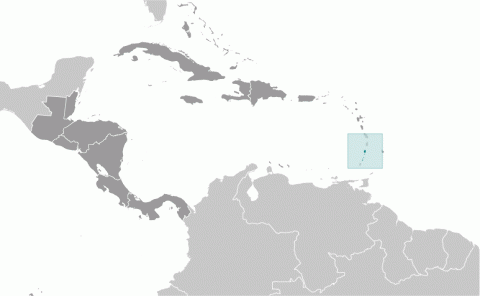Child Labor and Forced Labor Reports
St. Vincent and the Grenadines


Minimal Advancement
Although research found no evidence that child labor exists in Saint Vincent and the Grenadines, in 2024, the government made minimal advancement in efforts to prevent the worst forms of child labor. During the reporting period, police recruits were trained on trafficking in persons indicators. However, despite this effort, Saint Vincent and the Grenadines’ laws do not meet international standards because the use of children for prostitution is not prohibited. In addition, the minimum age of 14 for hazardous work falls below international standards, and there is no legislation prohibiting the use, procuring, and offering of children in illicit activities, including in the production of drugs. The government also did not publicly release information on its labor law enforcement efforts.
Research found no evidence that child labor exists in Saint Vincent and the Grenadines.
| Standard | Age | Meets International Standards | Legislation |
|---|---|---|---|
| Minimum Age for Work | 14 | ✓ | Article 8 of the Employment of Women, Young Persons, and Children Act |
| Minimum Age for Hazardous Work | 14 | ✗ | Schedule, Part I, Articles 1, 2, and 5 of the Employment of Women, Young Persons, and Children Act |
| Identification of Hazardous Occupations or Activities Prohibited for Children | ✗ | Part I, Sections 3 and 4, and Articles 1, 2, and 5 of the Employment of Women, Young Persons, and Children Act; Section VI(37) of the Saint Vincent and the Grenadines Occupational Safety and Health Act of 2017 | |
| Prohibition of Slavery, Debt Bondage, and Forced Labor | ✓ | Chapter XII, Part 207 of the Criminal Code; Articles 2 and 5–8 of the Prevention of Trafficking in Persons Act | |
| Prohibition of Child Trafficking | ✓ | Articles 2 and 5–8 of the Prevention of Trafficking in Persons Act | |
| Prohibition of Commercial Sexual Exploitation of Children | ✗ | Articles 2 and 5–8 of the Prevention of Trafficking in Persons Act; Chapter VIII, Parts 130 and 131 of the Criminal Code; Section 15 of the Cybercrime Act | |
| Prohibition of Using Children in Illicit Activities | ✗ | ||
| Minimum Age for Voluntary State Military Recruitment | N/A* | ||
| Prohibition of Compulsory Recruitment of Children by (State) Military | N/A*† | ||
| Prohibition of Military Recruitment by Non-state Armed Groups | ✗ | ||
| Compulsory Education Age | 16 | ✓ | Article 2 of the Education Act |
| Free Public Education | ✗ | Articles 14–16 of the Education Act |
* Country has no conscription
† Country has no standing military
Saint Vincent and the Grenadines does not meet the international standard for hazardous work for children because the law allows children ages 14 to 17 to perform industrial activities, including mining and construction, and does not adequately protect children from hazardous work that may jeopardize their health, safety, or morals. The government also has not determined by national law or regulation the types of hazardous work prohibited for all children under age 18. In addition, laws have not been established that prohibit the use of children in illicit activities, including drug trafficking and production. The law does not fully meet international standards for the prohibition of commercial sexual exploitation of children, as it does not prohibit the use of children for prostitution. Moreover, as the minimum age for work is lower than the compulsory education age, children may be encouraged to leave school before the completion of compulsory education. Laws providing for free basic education do not meet international standards because they permit schools to charge tuition fees for some students who reside in Saint Vincent and the Grenadines but are not citizens.
| Organization/Agency | Role & Activities |
|---|
| Ministry of Labor: Enforces child labor laws through its Department of Labor and refers victims to appropriate social services. If the Department finds a criminal violation, it forwards the case to the Royal Saint Vincent and the Grenadines Police Force. Conducts inspections at businesses and workplaces, together with the Anti-Trafficking in Persons Unit (ATIPU), to ensure that labor laws are followed. |
| Royal Saint Vincent and the Grenadines Police Force: Makes criminal arrests, including those involving the worst forms of child labor. Addresses human trafficking through its ATIPU, refers survivors to appropriate social services, and funds financial requests made by ATIPU. In 2024, 54 police recruits were trained on indicators of human trafficking. |
As there is no evidence of a child labor problem, there appears to be no need for policies, programs, or a mechanism to coordinate efforts to address child labor.
| Area | Suggested Action |
|---|---|
| Legal Framework | Establish age 18 as the minimum age for hazardous work and identify hazardous occupations and activities prohibited for children. |
| Criminally prohibit the use of children for prostitution. | |
| Criminally prohibit the use, procuring, and offering of children for illicit activities, including in the production and trafficking of drugs. | |
| Criminally prohibit the recruitment of children under age 18 by non-state armed groups. | |
| Raise the minimum age for work from age 14 to 16 to align with the compulsory education age. | |
| Ensure that laws that establish free public education through the basic level apply to all children. |
